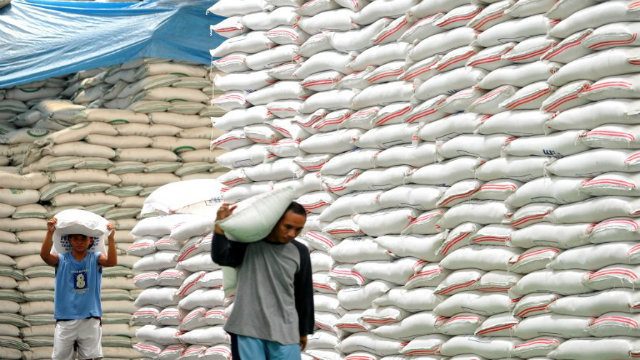SUMMARY
This is AI generated summarization, which may have errors. For context, always refer to the full article.

MANILA, Philippines – The National Food Authority (NFA), assured the public it had a sufficient supply of rice in case of disasters such as typhoon Chedeng (Maysak).
The state-run grains agency has a total rice inventory of 9,690,508 bags as of March 31, equivalent to 15 days consumption based on the national daily rice consumption requirement of 31,000 metric tons (MT), said NFA Administrator Renan Dalisay on Sunday, April 4.
Dalisay said NFA rice inventory in Region 1 stands at 668,462 50-kilogram bags; Region 2 at 509,796 bags; Region 3 at 1,263,627 bags; Region 4 at 1,424,600 bags; Region 5 at 350,265 bags and National Capital Region at 1,338,106 bags
The Philippine Statistics Authority (PSA) announced last month that there is sufficient rice stock to last 69 days. This accounts for the total rice stock in the country, including rice stored in households and commercial warehouses.
Rice reserves will get a boost by the scheduled arrival of reserve stocks purchased from Vietnam and Thailand.
Prepared for Typhoon Chedeng
The NFA said it was prepared to use the rice reserves for typhoon Chedeng.
NFA regional and provincial offices situated along the typhoon path were instructed to keep the warehouses open to serve the rice requirements of local governments units (LGUs) and disaster response agencies for their relief operations, dalisay said.
He added that the agency had made arrangements with LGUs and various relief agencies for on credit sale of rice as needed.
Depot areas were identified to supply the rice requirements in areas to be affected by the typhoon in case the stocks in these warehouses become depleted.
Typhoon Chedeng was initially feared to be a super typhoon, but weakened into a tropical depression as it hit land.
The weather disturbance entered the country in the middle of the harvest season and as farmers were rushing to complete another dry season cropping before the lean season of July to September.
Food Security Chief Francis Pangilinan, who oversees the NFA, said that based on the survey conducted by the NFA, only about 30% of the first dry season crop remain to be harvested in these areas. – Rappler.com
Add a comment
How does this make you feel?
There are no comments yet. Add your comment to start the conversation.